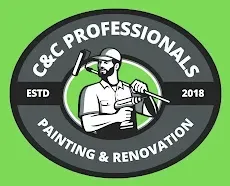
How to Repair Cracked Kitchen Tiles: Easy Repair Tips & Tricks
Discover Expert Tips on How to Repair Cracked Kitchen Tiles and Restore Your Culinary Space
Your kitchen is more than just a place where meals are prepared — it’s a hub of family activity and the heart of your home. When cracked kitchen tiles mar your space, it’s not just aesthetic; it can compromise durability and sanitation. Fortunately, understanding how to repair cracked kitchen tiles can save you time, money, and hassle while restoring your kitchen’s charm and functionality.
Why Do Kitchen Tiles Crack, and Should You Repair Them or Replace Them?
Before diving into the repair process, it’s vital to grasp why your tiles cracked in the first place. Common causes include shifts in the underlying substrate, impacts from heavy objects, temperature changes, or improper installation. Identifying the root cause prevents future damage and helps determine whether repair or complete replacement is the wisest approach.
If the crack is isolated and the tile remains stable, repairing it is often sufficient. However, extensive cracking, loose tiles, or underlying structural issues might warrant a more thorough replacement. Doing a quick assessment or consulting a professional can be your best move — especially if you’re unfamiliar with tile work or unsure about the damage extent.
What Are the Essential Tools and Materials Needed for Tile Repair?
Safety gear: gloves, goggles, dust mask
Replacement tiles: matching your existing tiles in size, color, and style
Tile adhesive or thin-set mortar: for securing replacement tiles
Grout: matching your existing grout color
Grout remover or dremel tool: to remove damaged grout
Chisel and hammer: for removing damaged tiles
Notched trowel: for applying adhesive
Sponge and clean water: for cleaning excess grout and adhesive
Level: to ensure tiles are even
Sealant: to protect repaired areas from moisture
How to Prepare Your Workspace and Ensure a Successful Repair?
Preparation is key. Clear your kitchen area of obstructions and cover surfaces to protect against dust and debris. Wear safety gear and ensure proper ventilation. Carefully remove the cracked tile or damaged grout, making sure to not damage adjacent tiles. Cleaning the area thoroughly before applying new material ensures better adhesion and a seamless finish.
What Are Step-by-Step Instructions on How to Repair Cracked Kitchen Tiles?
Step 1: Remove the Damaged Tile or Cracked Grout
Start by chipping away the grout around the damaged tile using a grout remover or a small chisel. If the crack is minor, you might only need to remove the grout rather than the entire tile. For larger cracks or compromised tiles, carefully break and remove the entire tile. Use your chisel and hammer to lift the tile, being cautious not to damage neighboring tiles.
Step 2: Prepare the Surface
Clean the underlying surface thoroughly, removing any debris, old adhesive, or grout residue. If any adhesive remains, ensure it’s fully dried and smooth before proceeding. For uneven surfaces, apply a leveling compound to create a flat, stable base for the new tile.
Step 3: Apply Adhesive and Fit the New Tile
Spread a layer of tile adhesive or thin-set mortar evenly with your notched trowel. Carefully place the new tile, pressing firmly to ensure good contact. Use a level to confirm that the tile is flush with surrounding tiles. Hold in place for a few seconds to secure the bond.
Step 4: Allow the Adhesive to Cure
Follow the manufacturer’s instructions for curing time, which typically ranges from 24 to 48 hours. Avoid walking on or disturbing the tile during this period to prevent shifting or grout cracks.
Step 5: Grout the Tile and Clean Excess
Mix your grout to the desired consistency and apply it using a rubber float, pressing it into the gaps around the new tile. Wipe away excess grout with a damp sponge, ensuring all joints are filled and smooth. Allow the grout to set according to instructions, then polish with a clean cloth for a seamless appearance.
How Can You Ensure Your Kitchen Tiles Stay Crack-Free in the Future?
Prevention is always better than repair. To minimize future cracking:
Address underlying issues: ensure the subfloor is stable and properly supported.
Use proper installation techniques: high-quality adhesive and professional leveling.
Protect tiles from impact: avoid dropping heavy objects on the surface.
Maintain consistent temperature and humidity: which can prevent substrate expansion and contraction.
What Are the Benefits of Hiring Professional Tile Repair Services?
While DIY repair is feasible for small cracks, larger jobs or complex issues benefit from the expertise of professionals like C&C Pro LLC. Skilled technicians ensure that repairs blend seamlessly with existing tiles, prevent future damage, and even enhance the overall aesthetic of your kitchen. Additionally, professional assessment can identify underlying problems that DIY approaches might overlook.
Is It Worth Remodeling My Kitchen After a Tile Crack?
Sometimes, a cracked tile is a symptom of broader issues or older cabinetry and countertops that could benefit from a renovation. Exploring your options for kitchen remodeling can significantly boost your home's value and functionality. For valuable insights, check our article on return on investment in kitchen remodels.
How Do I Find the Best Professionals for My Kitchen Renovation?
Research local experts with a track record of quality work. Look for reviews, before-and-after photos, and clear quotes. Consider consulting with specialists like our team at C&C Pro LLC—we provide comprehensive renovation services tailored to your needs, whether it’s tile repair, cabinet upgrades, or aesthetic enhancements.
What Are Some Creative Ideas to Modernize My Kitchen When Repairing Tiles?
Implement contrasting grout colors or patterns for a bold statement.
Replace damaged tiles with trendy tiles that reflect your style.
Add decorative accents like mosaics or border tiles to enrich the space.
Coordinate your backsplash with complementary countertops and cabinetry.
Upgrading your kitchen doesn't always mean a complete overhaul. Small modifications, like replacing cracked tiles with new styles, can bring a fresh look while increasing your home’s value. To explore design possibilities, visit our page on bathroom remodel designers.
What Are Common Mistakes to Avoid During Tile Repair?
Using incompatible grout or adhesive, leading to quick deterioration.
Inadequate surface preparation, resulting in loose or uneven tiles.
Rushing the curing process, which can cause cracks or misalignment.
Not matching the tile style or size, causing visual inconsistencies.
Following professional guidelines and taking your time can prevent these pitfalls, ensuring a durable and attractive finish.
How Can Professional Repair Increase My Home’s Value?
A well-maintained kitchen, free of visible damage like cracked tiles, boosts curb appeal and homeowner confidence. Investing in quality repairs and renovations can elevate the overall value of your property. For detailed insights, explore our post on ROI of kitchen remodeling.
Frequently Asked Questions (FAQs)Can I repair a cracked tile myself, or should I hire a professional?
For minor cracks and basic repairs, DIY can be effective if you follow proper protocols. However, for extensive damage or if you lack experience, hiring professionals like C&C Pro LLC ensures quality results and durability.
How long does it take to repair cracked kitchen tiles?
The timeframe varies depending on the repair’s complexity. Simple grout touch-ups may take a few hours, while replacing multiple tiles could extend to a day or two, including curing and finishing time.
Will repairing tiles affect my kitchen's usability?
Minor repairs can often be completed quickly with minimal disruption. Larger projects might require temporary adjustments, but a professional approach ensures safety and functionality are maintained.
What should I do if the crack reappears after repair?
This may indicate underlying structural issues or improper installation. Returning to a professional for an assessment can identify the root cause and implement a lasting solution.
Where can I find quality tiles and repair materials?
Local home improvement stores, specialty tile shops, and online retailers offer a wide selection. For mounting and sealing your tiles professionally, consult with experienced contractors like those at C&C Pro LLC.
Dealing with cracked kitchen tiles doesn’t have to be a daunting task. With the right knowledge, tools, and expertise, you can restore your culinary space to its original beauty and functionality. Whether you opt for a DIY approach for minor cracks or seek professional services for a comprehensive upgrade, taking timely action will ensure your kitchen remains a welcoming hub for years to come.




















